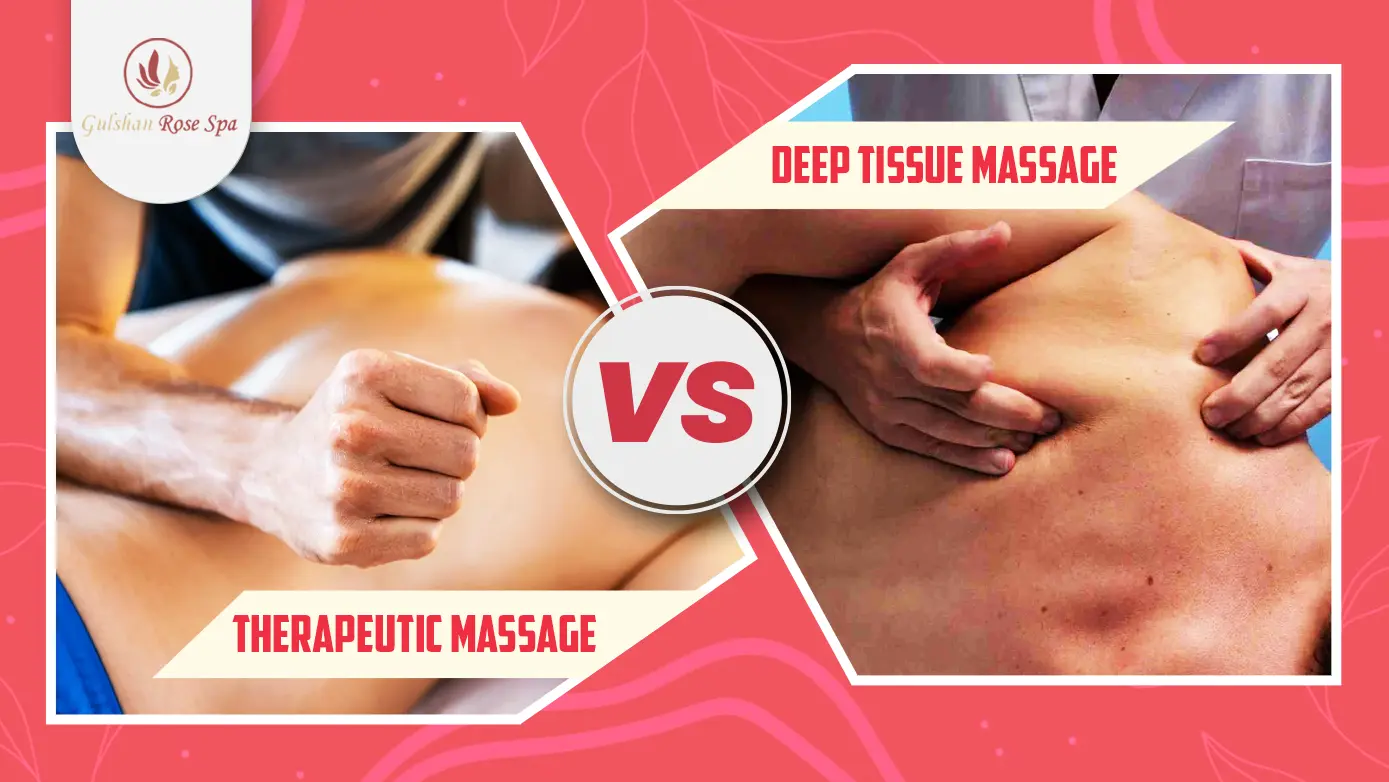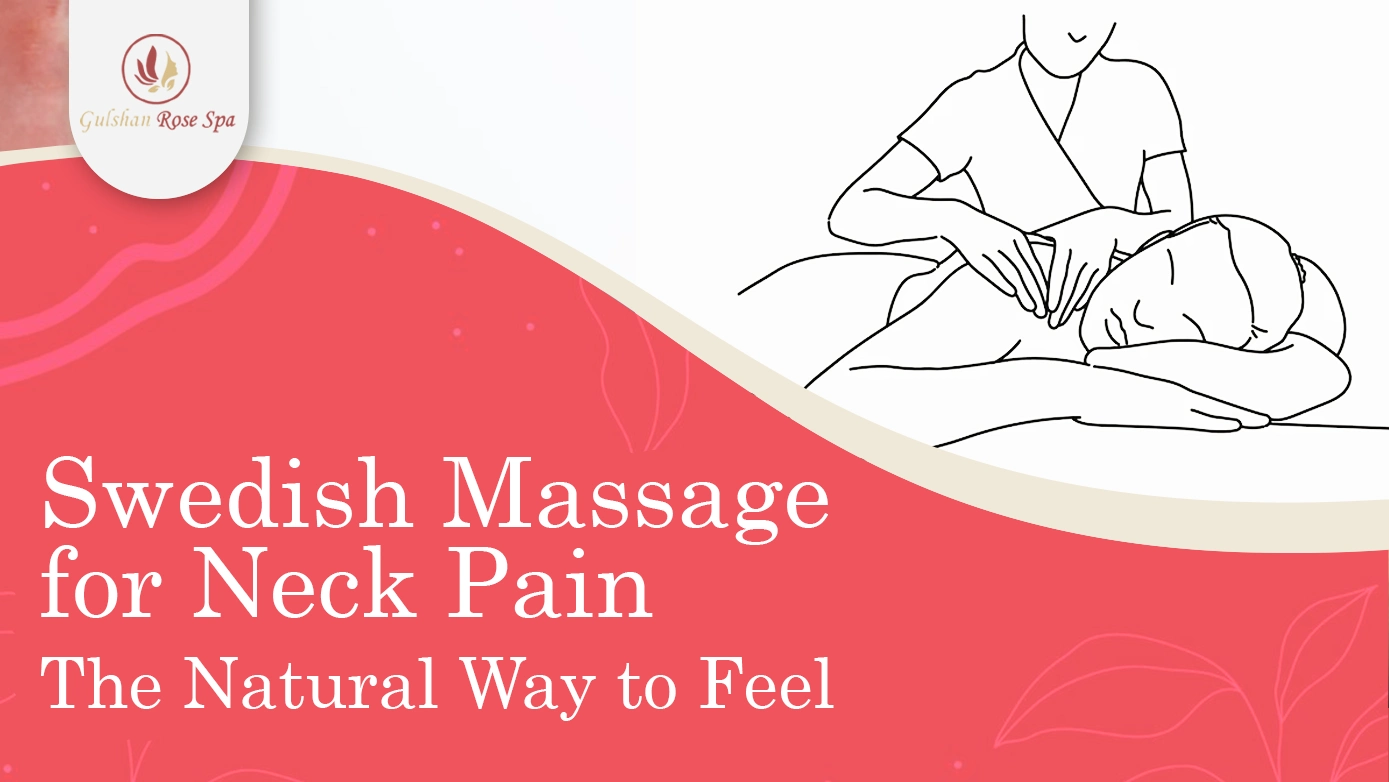Massage therapy has evolved into a trusted complement to medical care, offering relief from chronic tension, injury recovery, and emotional stress. Among the many types of massages available, two stand out and are often compared: therapeutic massage vs deep tissue. While both approaches can relax and rejuvenate, they serve very different purposes.

Therapeutic massage is designed to nurture overall balance and ease, whereas deep tissue therapy dives into the body’s deeper layers to resolve persistent pain or muscle restrictions.
Still wondering which is best for your body? In this guide, we’ll explore “What is the difference between a deep tissue massage and a therapeutic massage?” Also, discuss their techniques and goals, and help you determine which one suits your needs best.
What Is a Therapeutic Massage?
A therapeutic massage is a structured, goal-oriented bodywork approach aimed at easing muscle tension, improving circulation, and restoring physical and emotional balance. It uses tailored techniques such as Swedish massage and myofascial release with light to medium pressure.
Sessions are calming yet purposeful, making them ideal for managing stress, reducing stiffness, and supporting overall wellness without discomfort or intensity.
What Is a Deep Tissue Massage?
A deep tissue massage is a specialized therapy that targets the deeper layers of muscle and connective tissue to relieve chronic pain and tightness. It involves firm, slow strokes and sustained pressure to break down adhesions and improve mobility.
While more intense than a typical massage, it’s highly effective for individuals dealing with sports injuries, postural imbalances, or ongoing muscular strain that requires deeper intervention.
Is Therapeutic Massage the Same as Deep Tissue?
No, therapeutic massage is not the same as deep tissue massage.
While both are forms of clinical massage therapy, they differ in technique, pressure level, and therapeutic intent. Therapeutic sessions focus on calming the body and promoting gentle relief, while deep tissue treatments concentrate on breaking down entrenched tension and addressing structural concerns.
Choosing the right one depends on your personal goals and physical needs.
Therapeutic Massage vs Deep Tissue Massage: What’s the Real Difference?

While both therapeutic and deep tissue massage share the goal of supporting health through skilled touch, they differ significantly in how they’re applied and what outcomes they offer.
To help you make an informed choice, here’s a side-by-side difference between therapeutic and deep tissue massage:
| Feature | Therapeutic Massage | Deep Tissue Massage |
| Pressure | Light to medium | Firm to deep |
| Technique | Swedish, gentle kneading, stretching | Slow, focused strokes with deep, sustained pressure |
| Purpose | Stress reduction, wellness, muscle maintenance | Chronic pain relief, injury recovery, and mobility gains |
| Sensation | Comforting and relaxing | May involve discomfort or soreness |
| Target Areas | General or mild tension areas | Specific pain points and muscle knots |
| Relief Duration | Short to moderate relief | Longer-lasting, deeper relief |
1. Techniques and Pressure
Therapeutic massage combines soft strokes, light-to-moderate pressure, and stretching to calm the nervous system, improve circulation, and maintain comfort—perfect for ongoing wellness care.
In contrast, deep tissue massage incorporates slower, more concentrated techniques using thumbs, elbows, or knuckles to access deeper muscle fibers. This massage is more intense and specifically designed to release chronic tension or long-standing adhesions.
2. Goals and Outcomes
Therapeutic massage focuses on promoting overall well-being. It helps regulate the nervous system, reduce everyday muscle tightness, and restore emotional balance. It’s ideal for maintaining general health and preventing stress-related discomfort.
By contrast, deep tissue massage therapy is a corrective approach aimed at tackling chronic pain, mobility restrictions, and repetitive strain by working through dense muscle layers and adhesions. Its goal is to restore functional movement by loosening deeper layers of tension and scar tissue.
3. Intensity and Client Experience
A therapeutic session generally feels smooth, calming, and restorative. While certain focus areas may receive more attention, the experience rarely causes discomfort, making it great for sensitive clients or those new to massage therapy.
On the other hand, deep tissue massage may feel intense or slightly painful at times, especially when working through dense knots or trigger points. It’s common to feel mild soreness afterward as the muscles adapt and heal from the deeper pressure.
4. Best Use Cases and Conditions Treated
Choose therapeutic massage if you’re seeking relief from mild tension, stress, or fatigue or simply want to support your wellness routine. It’s often used alongside mental health practices, physical therapy, or preventative care.
Opt for deep tissue massage when dealing with more complex issues such as postural dysfunction, sports injuries, or chronic muscular discomfort. This is often recommended by physiotherapists and chiropractors as a means of long-term rehabilitation and recovery.
5. Duration of Results and Maintenance
Therapeutic sessions often deliver gentle, short-to-medium-term benefits, making them ideal for frequent upkeep in a wellness routine. Many clients book sessions weekly or bi-weekly to support ongoing balance.
Deep tissue massage often results in more long-lasting relief due to its focus on breaking down deeper layers of muscle tension. However, the intensity may require a longer recovery time between sessions, depending on the individual’s response.
Deep Tissue Massage vs Therapeutic Massage – Which Is Better for Muscle Recovery

Muscle recovery requires increased circulation, targeted tissue work, and improved mobility. While both massage types support recovery, deep tissue massage tends to be more effective for:
- Muscle fatigue from workouts
- Tension in specific areas
- Releasing trigger points
However, therapeutic massage may help speed up recovery when paired with rest days. It improves oxygen flow, reduces inflammation, and encourages muscle relaxation, especially for athletes seeking maintenance in between high-performance days.
Are Therapeutic and Deep Tissue Massages Good for Chronic Pain?
Yes—but in different ways.
- Deep tissue massage is specifically designed to target the root causes of chronic pain, like muscle tightness, adhesions, or injury scars. It works deeper into the tissue to restore mobility.
- Therapeutic work focuses more on soothing the nervous system and easing mild, stress-linked tension, fostering comfort and relaxation.
If you’re dealing with back pain, consider this: Therapeutic massage vs deep tissue for back pain depends on the nature of the pain. If it’s due to posture or stress, therapy might be better. If it’s muscular or injury-related, deep tissue is the preferred approach.
When Should You Choose Therapeutic Massage vs Deep Tissue Treatment?
Choosing between therapeutic massage and deep tissue massage depends on your health goals, physical condition, and personal preferences. Both offer unique benefits—but understanding when each is most effective can help you get the results you need, whether you’re seeking wellness support or targeted relief.
Let’s explore when each massage style is best suited for your needs:
Choose Therapeutic Massage If You:
- Need to de-stress and rebalance
- Experience mild tension or discomfort
- Struggle with sleep or fatigue
- Are new to massage therapy
- Want preventive wellness support
Choose Deep Tissue Massage If You:
- Suffer from chronic pain or tightness
- Are recovering from injury or overuse
- Have postural or structural Issues
- Need recovery after intense activity
- Want deep, lasting tension relief
Whether you’re still uncertain about which massage style to choose, consider your main needs carefully.
If you’re looking for a soothing experience that helps you emotionally unwind and provides gentle physical relief, a therapeutic massage is likely the ideal option.
On the other hand, if you’re facing persistent muscle tension, recovering from an injury, or dealing with musculoskeletal discomfort, deep tissue massage offers a more targeted, corrective approach designed to address these deeper issues effectively.
How Gulshan Rose Spa Helps You Find the Right Massage for Your Needs

At Gulshan Rose Spa, we recognize that choosing the right massage can be overwhelming, especially when deciding between options like therapeutic vs deep tissue massage.
While we specialize in a diverse range of massages—including Swedish, aromatherapy, traditional Thai, and neuromuscular therapy—that promote relaxation, healing, and balance, we understand that each body has unique needs.
Our expert therapists conduct a thorough consultation to learn about your wellness goals, muscle tension, and sensitivities. This personalized approach allows us to recommend the most suitable massage style from our services, ensuring that whether you seek calming relief, revitalizing energy, or targeted muscle relaxation, your session supports both immediate comfort and long-term well-being.
Our carefully curated treatments effectively address many similar concerns through tailored techniques and holistic care.
Trust Gulshan Rose Spa to guide you toward a massage experience perfectly aligned with your body’s needs.
To Wrap Up
When comparing therapeutic massage vs deep tissue massage, there’s no one-size-fits-all answer—both provide powerful, yet distinct benefits. Therapeutic massage is ideal for relaxation, stress relief, and overall wellness, while deep tissue massage targets chronic pain and helps restore deep muscular function. Your choice should align with your specific needs, lifestyle, and physical condition.
At Gulshan Rose Spa, we encourage you to listen to your body and consult with our licensed therapists to determine the best approach—or even blend techniques into a customized treatment that supports your recovery, performance, and long-term health.
Frequently Asked Questions
Can therapeutic massage replace deep tissue for sports injuries?
Therapeutic massage can aid recovery, but doesn’t fully replace deep tissue for sports injuries. Deep tissue targets deeper muscle layers and scar tissue, while therapeutic massage supports circulation and healing. Often, both are combined for optimal results.
Which is better: deep tissue vs therapeutic massage?
Ultimately, it depends on your goals. If you’re dealing with chronic muscle tension or injury, deep tissue works best. However, for relaxation, stress relief, or routine wellness, therapeutic massage is often the more suitable choice.
Should I get a deep tissue or therapeutic massage?
That depends on what your body needs. Deep tissue is ideal for targeting specific pain or muscle knots, while therapeutic massage is better suited for overall balance, relaxation, and maintaining general physical and mental well-being.
What are the main differences between therapeutic and deep tissue massage?
The key difference lies in pressure and purpose. Therapeutic techniques involve gentle to moderate pressure applied in flowing motions, while deep tissue therapy relies on deliberate, forceful strokes to reach tight, underlying muscle fibers.
How long does a therapeutic massage and deep tissue last?
Typically, both massages last between 60 to 90 minutes. However, deep tissue sessions may take longer due to the slower, more intense technique required to address deeper layers of muscle and connective tissue effectively.





